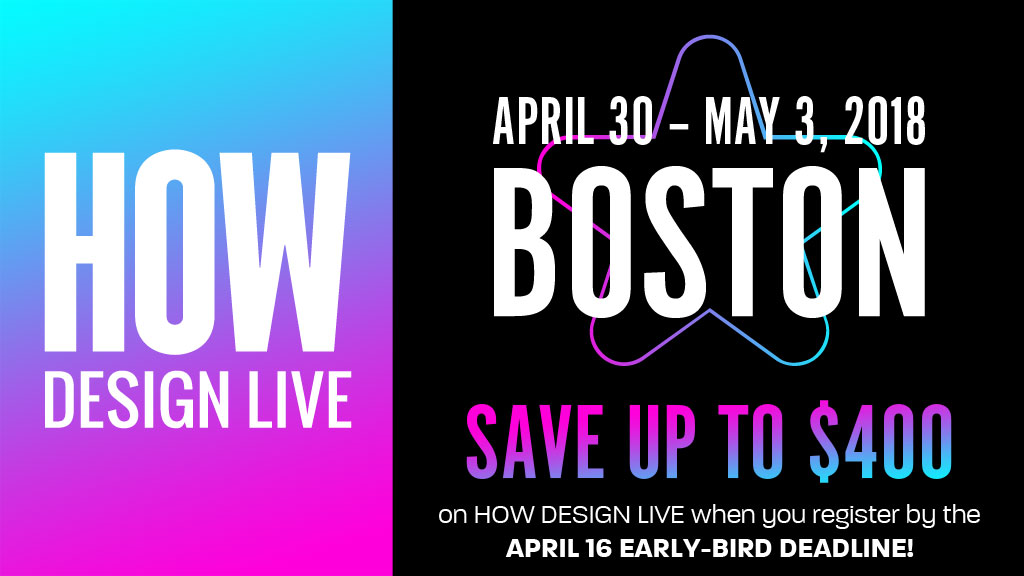
Judges Joshua Chen of Chen Design Associates, Mackey Saturday of Chermayeff &
Geismar & Haviv and Daniela Garza of Anagrama await your work.
“Content marketing doesn’t work.”
That’s the refrain I hear from many design firms who quickly climbed aboard the content marketing bandwagon with high expectations.
Of course, content marketing is neither a panacea nor a magic bullet. And anyone who goes into it with that idea has been wildly disappointed.
That said, content marketing can also be the most effective marketing tool available, with a few “ifs”—if you strategically map out a content plan, if you invest the time and if you commit the resources to do it right.
Because if any marketing strategy is a long game, it’s content marketing.
But these days, when there are, at last count, 4000+ marketing tools to choose from, it’s become much more challenging to find the perfect combination to reach your target market without devoting your life to it.
Indeed, there are many types of content marketing, so let me begin by defining content marketing for designers and design firms.
Definition: Content marketing is a strategy to demonstrate your expertise while simultaneously providing value to your clients through useful information (instead of salesy materials).
The media options for delivering your content are almost infinite; most popular are the writing and presenting of original and curated material, via blogging, articles, guests posts, white papers and case studies, live speaking and webinars, recorded video and online courses, and the trendiest at the moment, podcasting. (If you haven’t heard the HOW Design Live podcast, listen here or subscribe in iTunes.)
Here’s my theory about why so many people complain that content marketing doesn’t work: Not all content is equal. Indeed, most of what is published is well, low quality. If you’re paying $10 per blog post, it’s very unlikely to attract the kind of traffic you want—and that brings us to your dream clients, for whom even good-quality standard content just won’t do.
You see, there are 2 types of content:
- Standard content: It demonstrates your expertise and your creative services and is relevant to your market, but that’s it. For example, a blog post or, even better, a video entitled Video: The Next Must-Have Marketing Tool is potentially useful, but not particularly compelling to your clients.
- Qualifying content: This type of content is like the “bat signal” to your best prospects because it addresses their most pressing issues and they can therefore hear it above all the noise. For example, Does Your Web Site Drive Your Donors Away? would be much more compelling to any nonprofit organization in almost any medium because it will scare them. This is an example of content that literally qualifies clients. It attracts the right ones at the right time—when they’re in their moment of need and looking for someone just like you.
But that’s not all.
Content marketing is even more powerful when you use it strategically on a targeted group and connect it to other marketing tools, such as direct outreach.
So first, your content has to be compelling to your dream clients. But what makes them actually want to hear from you is that you’re featuring them in it!
That means, before you develop the material for Does Your Web Site Drive Your Donors Away? you reach out to your top five dream clients and invite them to be interviewed by you on that topic.
During that interview, you ask questions and they provide answers, all of which you will include in your content marketing, of course. But more important, through that process, you are developing a relationship with a dream client and hearing about what is and isn’t working for them. This, in effect, puts them in a position of telling you what they need help with. From there, it’s a very short hop to a conversation about how you might help them solve those problems.
So, you end up with real-time data about the real needs of your best prospects, burgeoning relationships with a few of them and some high-quality content featuring your dream clients, which looks great and ranks well on Google.
You can also do the whole thing backward. Choose your top clients and feature them or their company in your content (without interviewing them first). Publish it and then reach out to let them know they’ve been featured.
That’s content marketing on steroids! And that’s what works. Content marketing expert Ryan Robinson explains why: “Compelling content creates real reasons to reach out to your dream clients.”
Come see actual examples in my talk, How To Reach Your Dream Clients With Content Marketing, at HOW Marketing Live, April 30–May 3 in Boston.









